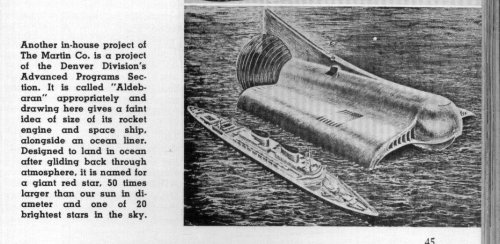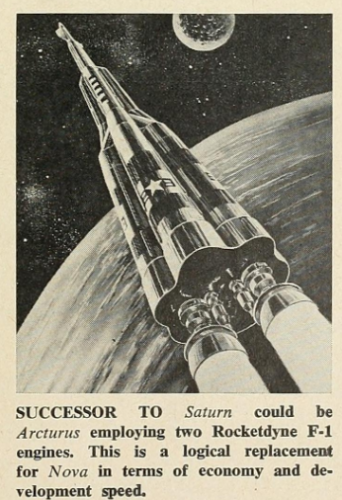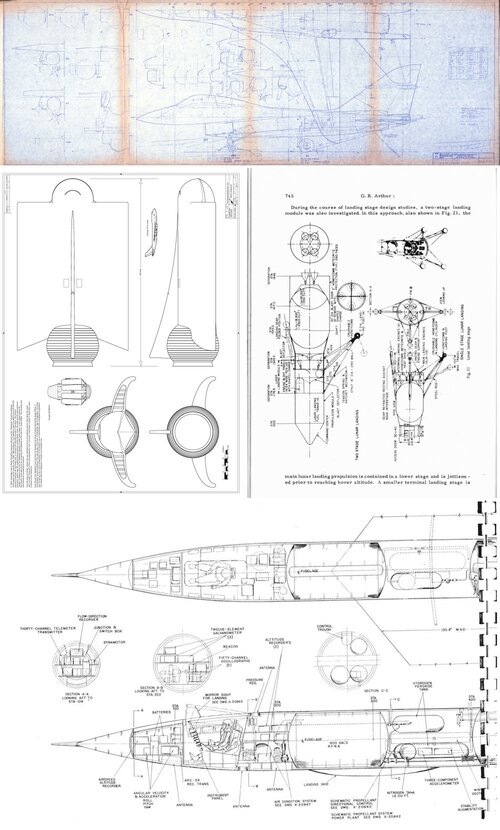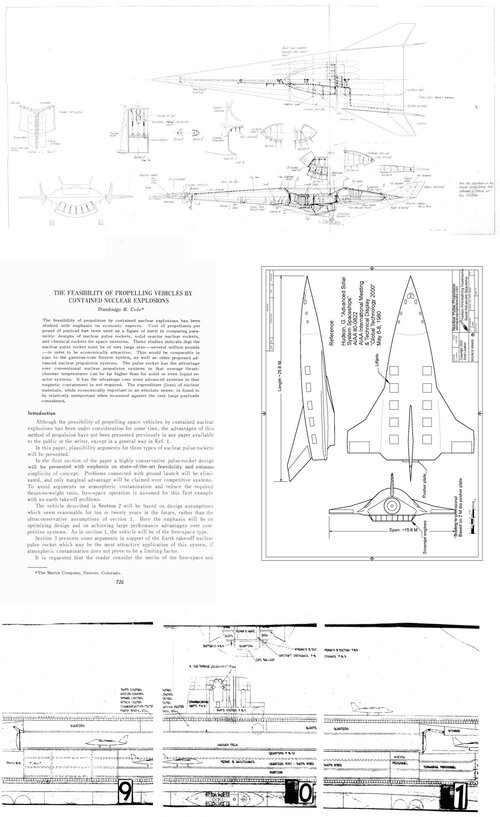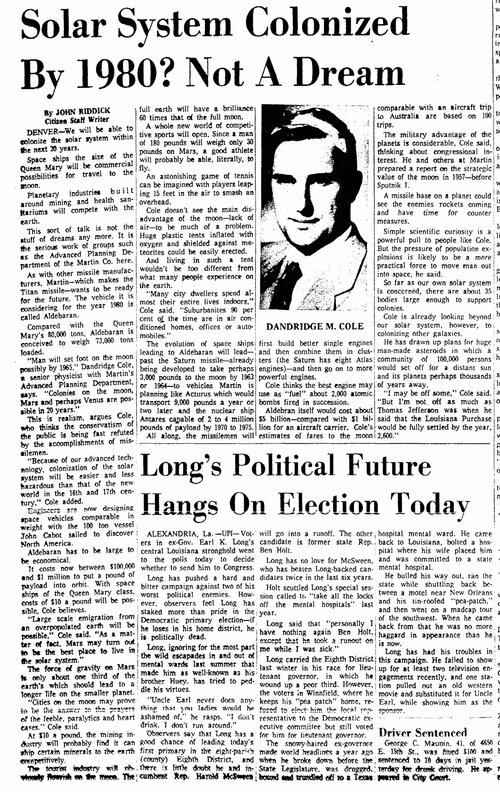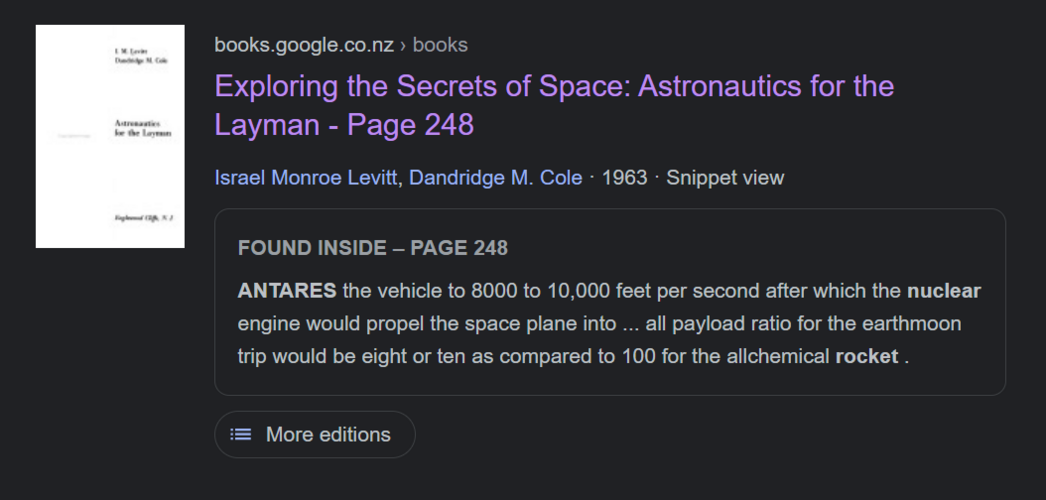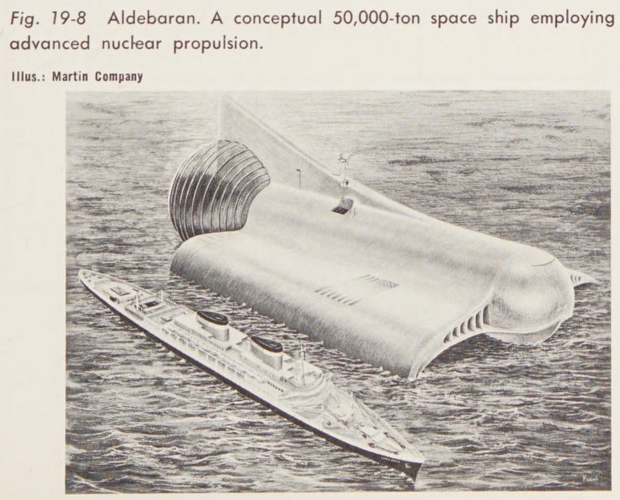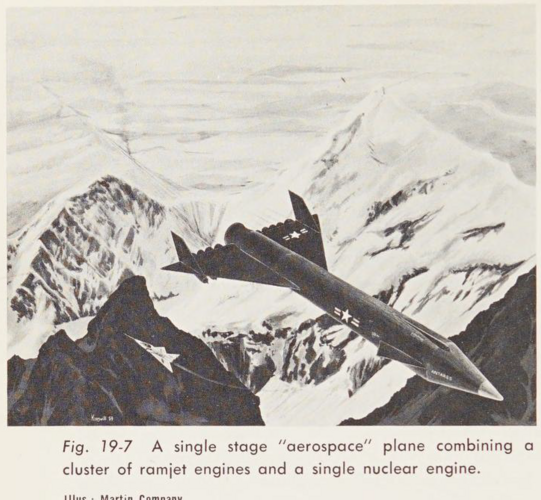Other contenders for the role of the economical space ship are the nuclear space ship Rita, proposed by Douglas, the chemical space plane under study by the USAF, Orion, CONEX and many others. The Antares conceptual vehicle is a nuclear space plane proposed by one ol the authors in 1959 as a high-performance vehicle of the 1970-1975 period (see Fig. 19-7).
The Antares was considered to have a gross mass between ten and 20 million pounds. Since it would land and take off horizontally and was a winged aerodynamic vehicle, its propellant fraction was assumed to be only 0.75 as compared to 0.90 or higher for a rocket. The average specific impulse was estimated to be 1000 stapps and the gross weight to-payload ratio lor orbital flight was calculated as four. This calculation assumed a boost to 2000 feet per second by a carrier vehicle on an inclined track. At 2000 feet per second, ramjet engines would be started and would accelerate the vehicle to 8000 to 10,000 feet per second after which the nu clear engine would propel the space plane into orbit. From orbit to the moon a vehicle like Antares could carry pay loads equal to more than 40% of its gross mass.
This could be an Antares refueled in orbit or a special ferry vehicle designed for operation from orbit to the moon. In the latter case payload could be an even larger percentage of the gross mass—perhaps as much as 50% (G /L = 2). Thus the over-all payload ratio lor the earth- moon trip would be eight or ten as compared to 100 lor the all chemical rocket.
For a ten-million-pound Antares (two stages) better than one million pounds ol payload could be carried to the moon. Of the nine million pounds of vehicle and propellant, 6.75 million would be liquid hydrogen. At 23 cents per pound, the total propellant cost would be $1,550,000.00 or $1.55 per pound of payload. If Antares were designed for 100 flights (compared to 10,000 for commercial airliners), the vehicle could cost one billion dollars and still have only $1.00 per payload pound of vehicle depreciation cost. With about $1.50 for propellants and $4.00 for indirect costs, the total cost per pound would be $6.50.
The Aldebaran, proposed by one of the authors in 1959, is a 100-million-pound space plane designed for horizontal take-off and landing from the ocean. Its propulsion was considered to be an advanced nuclear system such as the gaseous core reactor, a fusion reactor, Orion or CONEX. Its specific impulse was estimated at 1500 to 3000 stapps and its propellant fraction at 0.5 to 0.7. At 1500 stapps and 0.5 propellant fraction, Aldebaran would be competitive with Antares. At 3000 stapps and 0.7, its payload fraction for orbital flights would be about 1.6 and for moon flights about five. Total costs per pound of payload would be equal to or less than the costs for Antares (see Fig. 19-8).
Although costs of $10.00 or less per pound delivered to the moon may seem fantastically low to many people who are aware of current, high, space payload costs, it is none the less reasonable to expect such cost reductions in the next 20 years. With cost of perhaps $5000.00 per pound expected for 1965, it appears prob able that a drop of an order of magnitude will occur every five years. At this rate moon travel will cost only $50.00 per pound in 1975 and $5.00 in 1980 (see Fig. 19-9). Some people estimate a slightly less precipitous drop with an order of magnitude change every seven years. 1 his would mean $50.00 per pound in 1979 and $5.00 in 1986.

